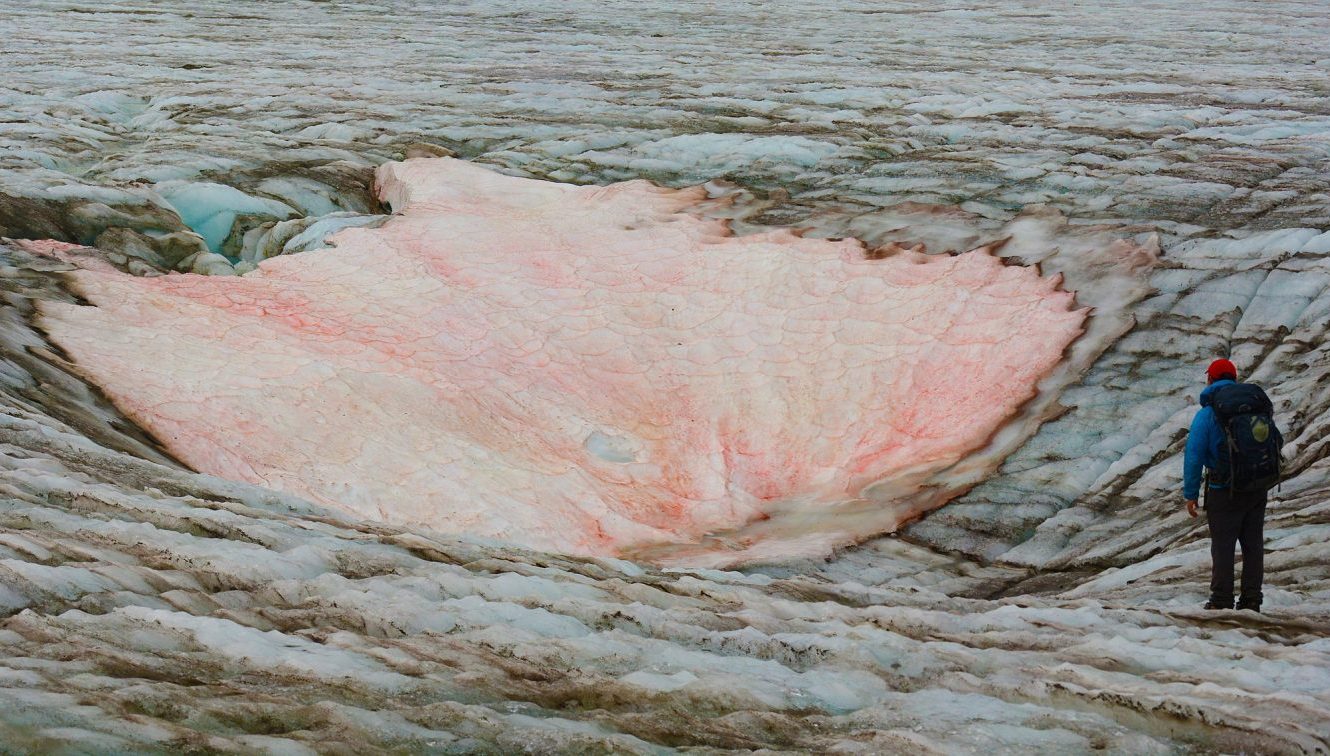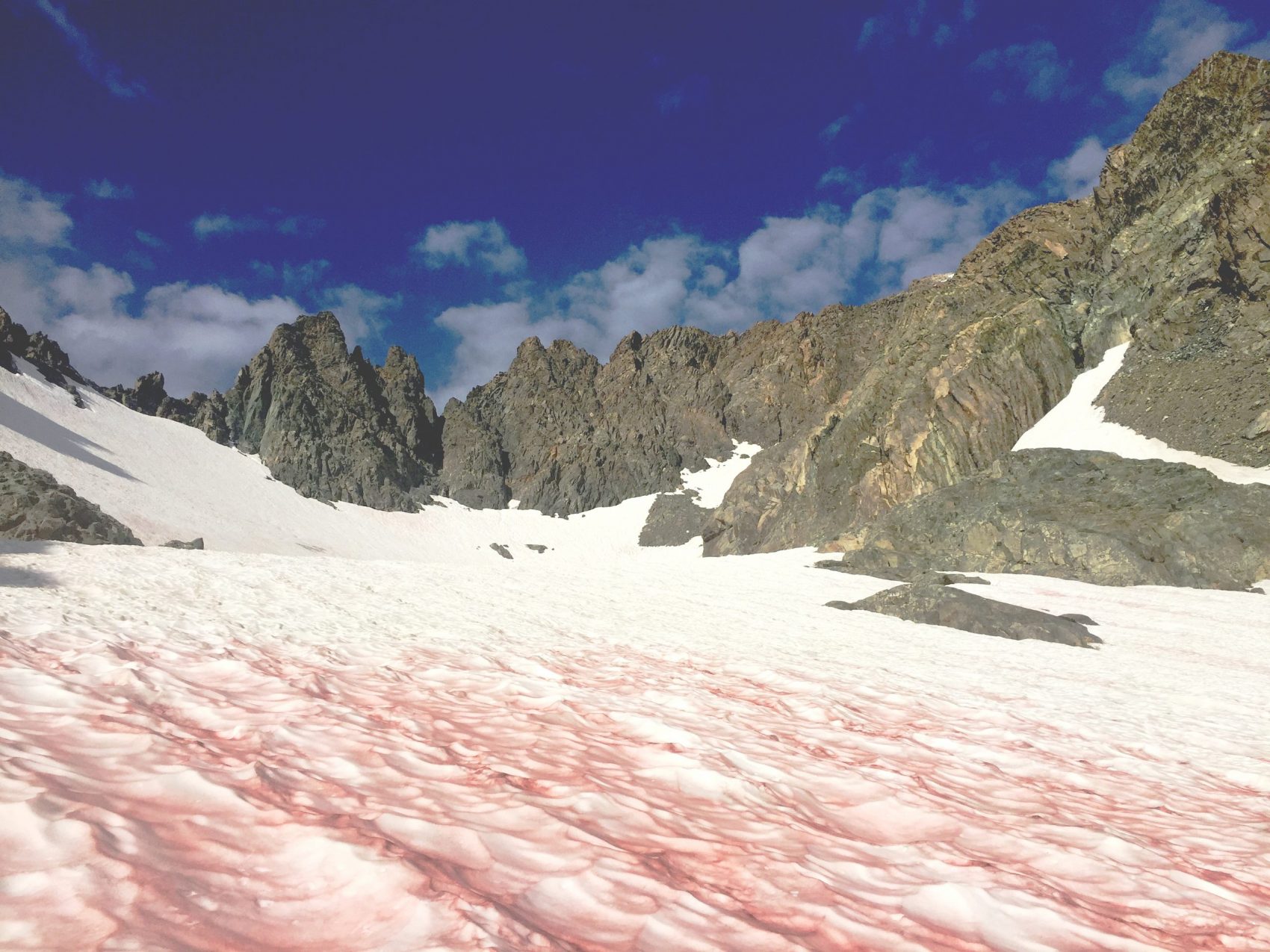
An annual summertime sight in alpine environments, pink snow, also known as watermelon snow, often lingers on late-season snowpack and glaciers worldwide. Though it may be appealing to try and take a bite of the brightly colored snow, it may forecast a more sinister warning about our warming environment.
The bacterial phenomenon behind pink snow helps to accelerate the melting of glaciers and seasonal snowpack. The unique color of the snow is actually caused by a species of green algae, Chlamydomonas nivalis, that thrives in the cold and wet environment of glaciers. After laying dormant during the winter, these algae release pink pigment as a protective barrier against the sun throughout the summer snowmelt the same way that humans use sunscreen.

The pink color of the pigment released by the algae causes snow to become less reflective than its pure white counterpart, making it absorb more heat from the sun and melt quicker. More snowmelt provides the algae with more water to grow in. And so the cycle continues; more algae make more pigment which causes faster snowmelt and even more algae. The impacts of this cycle have been investigated in a scientific study of arctic glaciers, which concluded that the pigment-producing algae could accelerate snowmelt by up to 13%.
“We estimated that the overall decrease in snow albedo by red pigmented snow algal blooms over the course of one melt season can be 13%. This will invariably result in higher melt rates”
With the impacts of pink snow being made clear, scientists are beginning to conduct widespread research into the algae behind it all. One such initiative, the Living Snow Project, is working to mobilize citizens to observe and take samples of pink snow to collect more data about the distribution and diversity of the algae. If you live near the Cascades of Washington or the Sierras in California, you could even volunteer with the project and help scientists better understand the algae spread.
